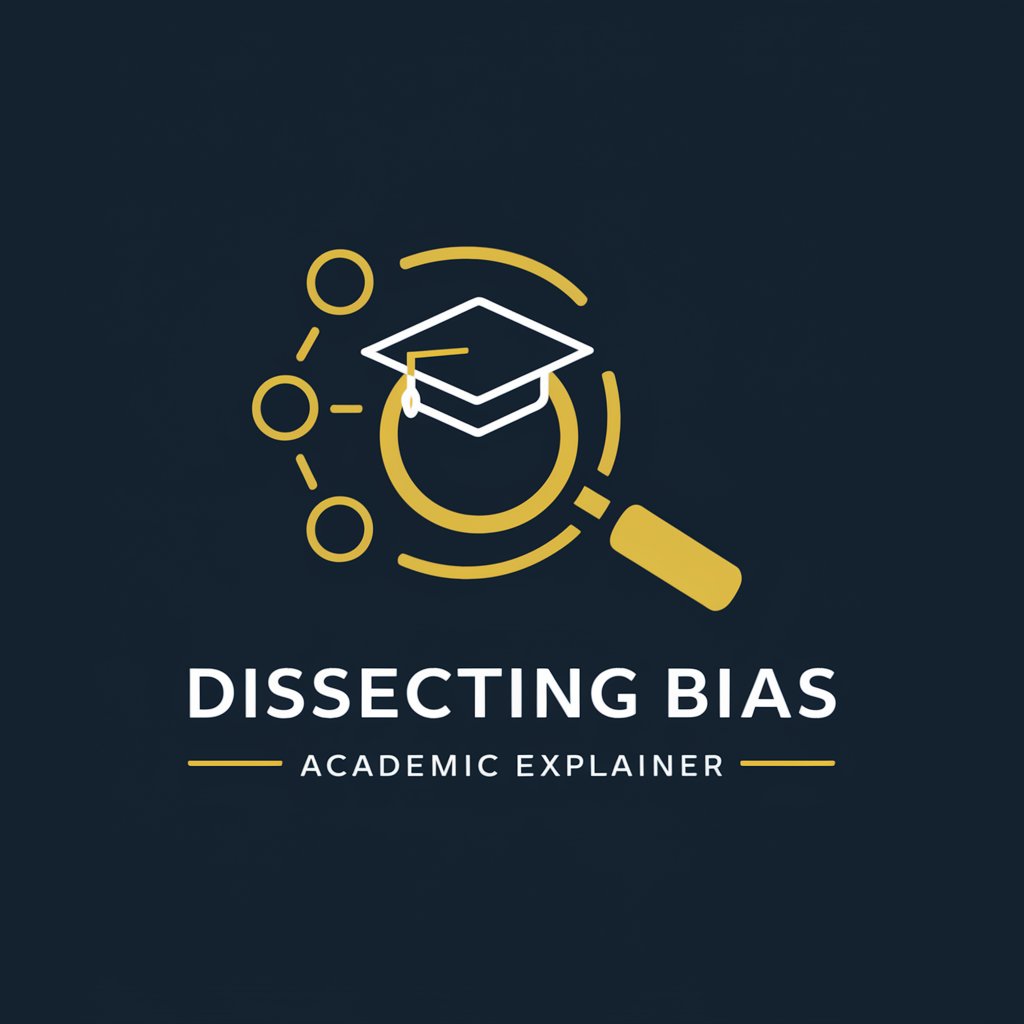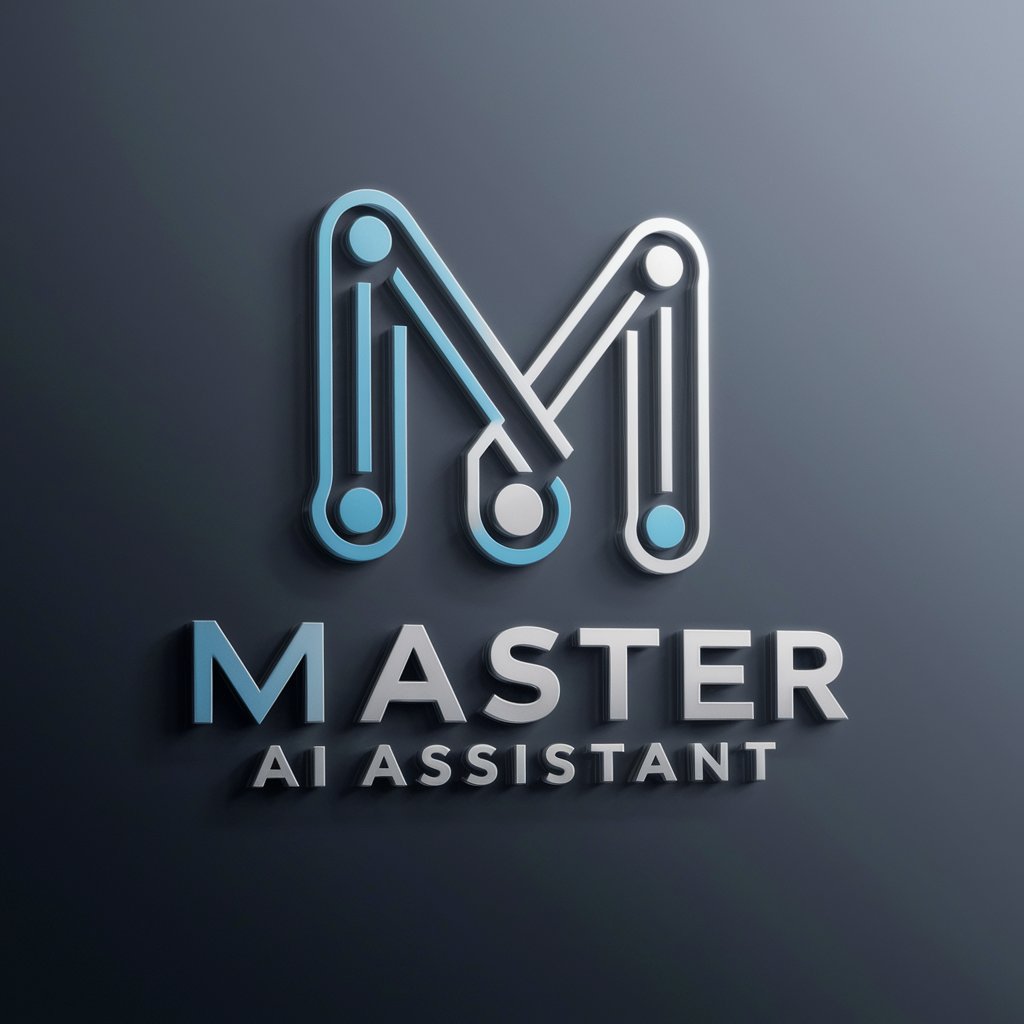Dissecting Bias - Academic Explainer - Bias Study Assistance

Welcome! Let's delve into 'Dissecting Bias' together.
Unraveling AI's Role in Healthcare Bias
Explain the methodology used in 'Dissecting Bias' to identify algorithmic bias.
What are the key findings of Obermeyer's study on racial bias in healthcare algorithms?
How does the algorithm's focus on cost prediction contribute to racial bias?
Describe the ethical considerations addressed in 'Dissecting Bias' by Ziad Obermeyer.
Get Embed Code
Introduction to Dissecting Bias - Academic Explainer
Dissecting Bias - Academic Explainer is a specialized tool designed to elucidate the complex academic and coding aspects of the paper 'Dissecting racial bias in an algorithm used to manage the health of populations' by Ziad Obermeyer et al. This tool aims to provide detailed explanations of the paper's methodology, results, and code, helping users understand the technical and ethical implications of algorithmic bias in healthcare. For example, it can demonstrate how the algorithm in the study inaccurately predicted health needs based on healthcare costs rather than actual medical conditions, which disproportionately affected Black patients. By analyzing the algorithm's design and outcomes, this tool assists in uncovering subtle biases and suggests improvements for future algorithmic design. Powered by ChatGPT-4o。

Main Functions of Dissecting Bias - Academic Explainer
Explaining Methodology
Example
It details the use of predictive algorithms in healthcare, illustrating how biases in data or model objectives can lead to disparities in patient care.
Scenario
A university lecturer uses this tool to explain to students how healthcare algorithms can perpetuate racial biases despite being technically accurate in cost predictions.
Analyzing Results
Example
The tool breaks down the findings that, despite similar cost predictions across races, Black patients were sicker at the same risk score compared to White patients.
Scenario
A healthcare policy maker uses the explainer to understand the implications of the study’s findings for reforming algorithmic standards in healthcare systems.
Code Interpretation
Example
It interprets the code used in the study to predict healthcare costs and discusses the potential for bias when certain variables, like race, are excluded.
Scenario
A software developer refers to this tool to understand how the exclusion of race as a variable in predictive models can impact algorithm fairness.
Ideal Users of Dissecting Bias - Academic Explainer
Academic Researchers
Researchers in healthcare, ethics, and data science can use this tool to explore the detailed workings of algorithms and their implications on racial bias in healthcare. This helps in conducting further studies or proposing modifications to existing predictive models.
Healthcare Professionals
Doctors, nurses, and healthcare administrators can use this tool to understand how the algorithms they may rely on are biased and to advocate for or implement more equitable tech solutions in patient care management.
Policy Makers
Government officials and policy advisors can utilize the explainer to inform policy changes, ensuring that healthcare algorithms improve care without perpetuating racial disparities.

Guidelines for Using Dissecting Bias - Academic Explainer
1
Visit yeschat.ai for a free trial without login, also no need for ChatGPT Plus.
2
Upload your academic or research material related to bias, especially focusing on healthcare algorithms or similar studies.
3
Specify the area or concept you need help with, such as understanding the methodology, results, or code details.
4
Utilize the detailed Q&A mode to ask specific questions about the methodology or results of studies like 'Dissecting Bias'.
5
Review responses and follow-up with more detailed inquiries if needed to deepen your understanding or clarify complex concepts.
Try other advanced and practical GPTs
Analytical Philosopher
Refining Thought, Advancing Philosophy

LitGPT
Elevate Your Literary Insights with AI

EL ALMA MATER
Smart AI for Smarter Answers

Prompt Engineering Master
Unleash creativity with AI-powered prompt engineering.

Guddy The Master Maker
Elevate Your Game with AI-Powered Design Insights

master
Enhance Productivity with AI

ConversaLens
Unleash AI-Powered Conversation Insights

Deep Reader
Deep Insight into Academic Literature

Paper Dissector
Unlock Research with AI

Paper Trimmer
Decipher Research with AI

Digital gold consultant
Empowering Digital Gold Investments with AI

Commodity market
Empowering Trading Decisions with AI

Sample Q&A for Dissecting Bias - Academic Explainer
What method does the 'Dissecting Bias' study use to analyze algorithmic bias?
The study uses a combination of data analysis, predictive algorithm examination, and clinical insights to examine how biases in algorithms can lead to healthcare disparities, especially racial disparities in patient care management.
How does the algorithm in 'Dissecting Bias' fail to account for racial disparities?
The algorithm inaccurately predicts healthcare needs based on cost rather than actual health needs, leading to lower identification of Black patients who may require more medical care, due to systemic issues like unequal access to healthcare.
What are some implications of the findings from the 'Dissecting Bias' study?
The findings suggest the need for algorithmic transparency and the reevaluation of how predictive variables are selected, to ensure they do not inadvertently perpetuate or ignore existing biases.
Can you explain how the study's authors recommend addressing the bias found in healthcare algorithms?
The authors recommend adjusting the algorithms' predictive targets from healthcare costs to direct health needs indicators, thus aiming for a more equitable assessment of patient care requirements.
What potential applications does the Dissecting Bias - Academic Explainer have in academic research?
This tool can be used to assist researchers in understanding complex algorithmic methodologies in healthcare studies, evaluating bias in their own research, and designing studies that better account for demographic variabilities.
